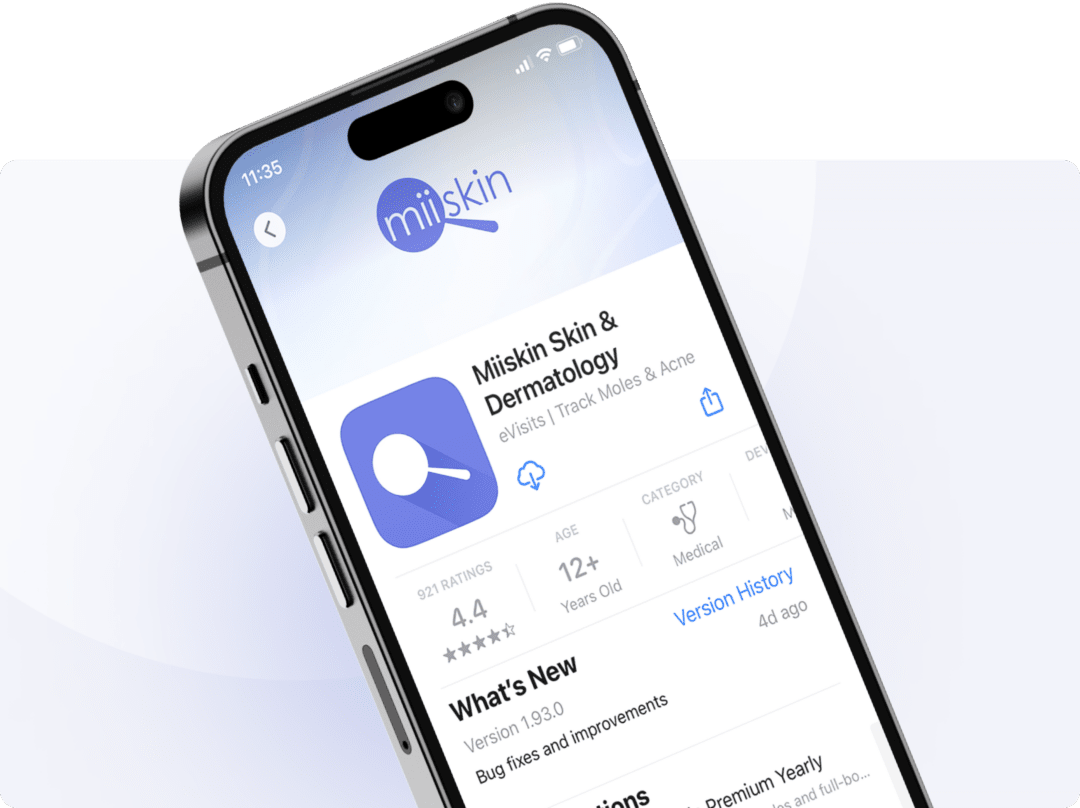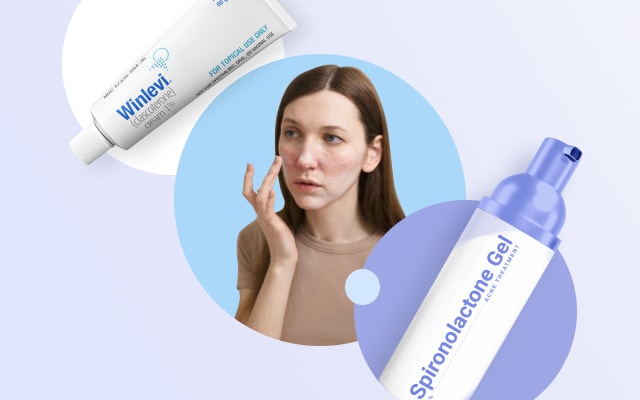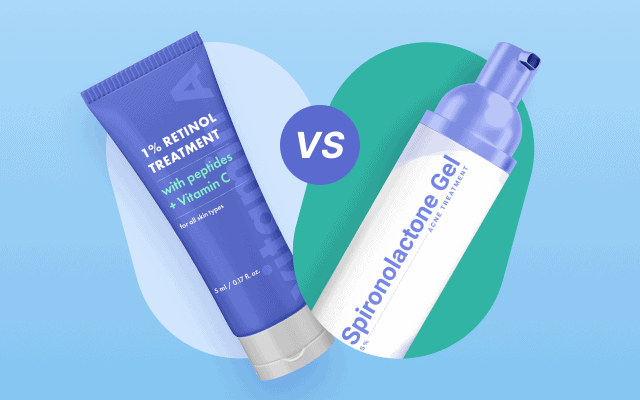Best on the spot treatment for acne
Learn more about the 9 most popular acne spot treatments, their pros and cons to help you choose the one that suits your needs and budget.
Covered in this article:
How do they work? | When to use it? | When to seek acne treatment? | How to get treatment? | Popular acne spot treatments | FAQ
Our commitment to producing high-quality content:
The information presented in this article is based on scientific research and the professional advice of our Content Medical Reviewers, who are experts in the field of Dermatology. How we write our content →
Dr. Alpana Mohta, board-certified dermatologist, says acne spot treatments are essential to combat occasional breakouts that demand immediate attention. With so many options on the market, it can be overwhelming to choose the best one.
This article evaluates some of the most popular acne spot treatments, highlighting their pros and cons to help you make an informed decision.
What is an acne spot treatment and how does it work?
An acne spot treatment works by targeting the specific pimples or blemishes on your skin with concentrated ingredients designed to reduce inflammation, kill bacteria, and promote faster healing. The active ingredients in these over-the-counter acne products vary but commonly include benzoyl peroxide, salicylic acid, sulfur, and tea tree oil.
- Benzoyl peroxide: This ingredient works by killing acne-causing bacteria (Propionibacterium acnes) and helping to dry out the excess oil and dead skin cells that clog pores. It’s particularly effective for inflammatory acne, like pustules and cysts1.
- Salicylic acid: This beta hydroxy acid (BHA) helps to exfoliate the skin by penetrating into the pores to dissolve excess sebum and dead skin cells. It is especially effective for treating blackheads and whiteheads2.
- Sulfur: Sulfur has antibacterial properties and helps to absorb excess oil, making it useful for treating oily, acne-prone skin. It also has a mild drying effect, which can help to reduce the size of pimples3.
- Tea tree oil: A natural alternative, tea tree oil has antibacterial and anti-inflammatory properties, making it effective for reducing redness and swelling associated with acne.
These treatments are typically applied directly to the affected area, allowing the ingredients to work specifically on the pimple, reducing its size and redness, and preventing the spread of acne-causing bacteria to other parts of the face. Consistent use of these treatments can help clear up breakouts faster and prevent new ones from forming4.
Are acne spot treatments the best way to fight acne?
Dr. Mohta says that although spot treatments are effective to target individual and occasional pimples, they are definitely not the best solution for widespread or chronic acne. Your acne spot treatment should be part of a broader skincare routine that includes preventive measures like cleansing and exfoliating. Addressing underlying causes, such as hormones or diet, may also be necessary for long-term acne management.
When to use an acne spot treatment?
Dr. Mohta says that you should use an acne spot treatment as soon as you notice a pimple or breakout, ideally at the early stages before it becomes more inflamed. Apply the treatment to clean, dry skin, targeting the specific blemish after cleansing and before moisturizing. Typically, spot treatments are most effective when used once or twice a day, such as in the morning and evening. They are best suited for active breakouts like inflammatory pimples, pustules, or cysts to reduce redness, swelling, and speed up the healing process. Avoid applying spot treatments on dry or irritated skin and follow the product instructions to prevent overuse and minimize potential irritation. Consistent use can help manage and diminish individual pimples while supporting overall acne management as part of a broader skincare routine.
When should I seek acne treatment from a dermatologist?
You should seek acne treatment from a dermatologist if your acne is severe, persistent, or not responding to over-the-counter treatments. Additionally, if your acne is causing significant scarring, emotional distress, or if you develop nodules or cysts, a dermatologist can provide specialized treatments that are more effective. Early intervention by a dermatologist can also help prevent long-term skin damage and improve your skin’s overall health.
How can I get effective acne treatment?
The best way to get effective acne treatment is to have a consultation with a board-certified dermatologist via Miiskin. The dermatologist will choose adequate treatment based on your individual needs, your symptoms and the severity of your acne. The treatment prescribed may include topical retinoids, prescription strength benzoyl peroxide, oral or topical hormonal therapy or oral or topical antibiotics.
The pros and cons of the most popular acne spot treatments
These are some of the most popular acne spot treatments available in the market, Dr. Mohta is giving you the list of pros and cons so you can decide which one is best for your symptoms and budget.
La Roche-Posay Effaclar Duo Acne Spot Treatment
Pros:
- Effective Ingredients: Contains high strength 5.5% benzoyl peroxide and lipo-hydroxy acid, both known for their ability to unclog pores and kill acne-causing bacteria.
- Fast-Acting: Many users report seeing a reduction in acne within 24 hours.
- Non-Comedogenic: It doesn’t clog pores, making it suitable for sensitive skin.
Cons:
- Drying: The strong ingredients can be drying, especially for those with sensitive skin.
- Price: It’s on the higher end of the price spectrum.
- Staining of clothes: Due to its bleaching effect, benzoyl peroxide can cause orangish blotches over clothes.
Sunday Riley Saturn Spot Treatment Mask
Pros:
- Effective Ingredients: Contains sulfur and niacinamide, which work together to reduce acne-causing bacteria, control oil production, and soothe inflammation. Sulfur is known for its antibacterial properties, while niacinamide calms the skin and reduces redness, making it great for both acne and rosacea.
- Good for Sensitive Skin: This mask is formulated to be gentle, with anti-inflammatory ingredients like niacinamide, making it suitable for sensitive skin prone to irritation.
- Dual Benefit for Acne and Rosacea: Designed to treat both acne and rosacea, helping to calm redness and reduce blemishes without causing excessive dryness.
Cons:
- Price: It is considered a premium product, making it more expensive than some other spot treatments on the market.
- Smell: Sulfur has a strong, distinct smell that some users might find unpleasant.
Neutrogena On-the-Spot Acne Treatment
Pros:
- Affordable: One of the more budget-friendly options.
- Mild Formula: Contains 2.5% benzoyl peroxide, which is effective yet less irritating than higher concentrations.
- Widely Available: Easy to find in most drugstores.
Cons:
- Drying: Like most benzoyl peroxide treatments, it can cause dryness and irritation.
- Not as Potent: The lower concentration of benzoyl peroxide may not be sufficient for more severe acne.
- Staining of clothes
Clean & Clear Acne Spot Treatment
Pros:
- Salicylic Acid: Contains 2% salicylic acid, which helps to exfoliate the skin and clear out pores.
- Quick Absorption: The gel formula absorbs quickly, making it suitable for use under makeup.
- Affordable: Budget-friendly and easily accessible.
Cons:
- Potential Irritation: Salicylic acid can cause dryness and peeling, particularly for those with sensitive skin.
- Limited Impact on Severe Acne: May not be effective for more severe acne cases.
- Salicylic acid is better suited as a preventative treatment rather than curative. Best advisable to be used regularly over acne prone or oily zones of face to keep the pores clean and prevent build up.
Murad Rapid Relief Acne Spot Treatment
Pros:
- Fast-Acting: Claims to reduce the size and redness of pimples within 4 hours.
- Strong Formula: Contains 2% salicylic acid, suitable for treating both mild and moderate acne.
- Non-Drying: Includes additional soothing ingredients like oat extract to counteract the dryness often caused by acne treatments.
Cons:
- Expensive: One of the more costly options available.
- Not Ideal for Sensitive Skin: Some users report irritation, especially on sensitive skin.
Consult a Board-Certified Dermatologist Now!

Download the Miiskin app to connect with independent, board-certified dermatologists who are licensed in your state. Answer a few questions, upload some photos and get a treatment plan in 1-2 days. Consultation price is $59 and medication renewals are only $39.
Online dermatology care is ideal for chronic dermatology conditions.
Tula Go Away Acne Spot Treatment
Pros:
- Targets Acne from Multiple Fronts: Contains acne fighting 5% benzoyl peroxide and azelaic acid.
- Probiotic-Infused: Contains probiotics,tea tree oil, and vitamin E which can help calm inflammation and promote healthy skin.
- Natural Ingredients: Includes licorice and niacinamide to brighten skin and reduce redness.
Cons:
- Strong Formula: May be too strong for sensitive skin. Cost: On the higher end, especially for a natural product.
Burt’s Bees Natural Acne Solutions Targeted Spot Treatment
Pros:
- Natural Ingredients: Contains salicylic acid 2%, tea tree oil and willow bark, known for their anti-inflammatory and acne-fighting properties.
- Gentle: Suitable for those looking for a natural, gentle approach to acne treatment.
Cons:
- Effectiveness: Natural ingredients may be less effective on severe acne.
- Strong Smell: The tea tree oil scent may be off-putting for some users.
CeraVe Acne Control Gel
Pros:
- Niacinamide-Enriched: Contains 2% salicylic acid, glycolic acid and lactic acid, which help keep the pores clear and clear the blemishes by gently exfoliating the skin.
- Hydrating: Includes ceramides and niacinamide to restore and maintain the skin’s natural barrier.
Cons:
- Not a Spot Treatment: While effective, this product is more of an all-over treatment rather than a targeted spot treatment.
- Mild for Severe Acne: May not be strong enough for particularly stubborn or severe acne spots.
- Better suited as a blemish clearing gel.
Skinfix Acne 2% BHA Spot Treatment
Pros:
- Dermatologist-Approved: Features 2% salicylic acid, 10% azelaic acid 2% niacinamide, which is effective in reducing acne and calming inflammation.
- Reduce redness and blemishes: The addition of azelaic acid makes it effective in rapidly reducing the redness of fresh acne spots and healing the pigmentation in old acne scars.
Cons:
- Price: It’s relatively expensive compared to similar products.
- Availability: Can be difficult to find in some locations.
Frequently asked questions
Can tretinoin be used as an acne spot treatment?
Dr. Mohta says that tretinoin can be used as an acne spot treatment, but it works more effectively when used as part of a broader skincare routine rather than solely as a spot treatment. Tretinoin is a powerful retinoid that works by increasing cell turnover, which helps to prevent clogged pores, reduce the formation of new acne, and promote the healing of existing blemishes.
Consult a Board-Certified Dermatologist Now!

Download the Miiskin app to connect with independent, board-certified dermatologists who are licensed in your state. Answer a few questions, upload some photos and get a treatment plan in 1-2 days. Consultation price is $59 and medication renewals are only $39.
Online dermatology care is ideal for chronic dermatology conditions.
What acne spot treatment works best?
Dr. Alpana Mohta, dermatologist, says that the acne spot treatment can vary depending on your skin type and the severity of your acne. La Roche-Posay Effaclar Duo is often highly recommended due to its combination of benzoyl peroxide and lipo-hydroxy acid (a salicylic acid derivative), which effectively unclogs pores and reduces inflammation quickly. Murad Rapid Relief Acne Spot Treatment is also a popular choice, known for its fast-acting salicylic acid formula that can reduce pimples in just a few hours.
How do you get rid of acne spots ASAP?
Dr. Mohta says that to get rid of acne spots as quickly as possible, look for treatments containing benzoyl peroxide or salicylic acid, which are known for their fast-acting properties. For quicker results, you can apply the spot treatment under an acne patch overnight. This technique also prevents the spread of bacteria to surrounding skin. Prescription-strength products may be more efficient as they are more potent, but they should only be used under a dermatologist’s supervision. Additionally, applying an ice pack to the area can help reduce inflammation and swelling, and using a non-comedogenic moisturizer can prevent excessive dryness caused by the treatment.
Can acne spots be removed?
Dr. Mohta says that acne spots can be removed or significantly reduced over time with adequate dermatological treatment. Dark spots, or post-inflammatory hyperpigmentation, can be treated with products containing tretinoin and hydroquinone, vitamin C, alpha hydroxy acids (AHAs) or niacinamide, which help lighten the skin and even out tone. Furthermore, to rapidly reduce the appearance of post acne dark spots, always use a SPF50+ and PA++++ sunscreen during the daytime.
How to remove acne naturally?
Dr. Mohta says that to remove acne naturally, focus on maintaining a healthy skincare routine that includes gentle cleansing, regular exfoliation with natural ingredients like salicylic acid from willow bark, and the use of natural spot treatments like tea tree oil. Applying aloe vera or honey can also help soothe inflammation and reduce redness. Practicing strict sun protection, maintaining a balanced diet and staying hydrated are additional natural methods that support clear skin from within.
How to get clear skin?
Achieving clear skin requires a consistent skincare routine tailored to your skin type. Start with a gentle cleanser, followed by a salicylic acid or benzoyl peroxide treatment to prevent breakouts. Regular exfoliation and moisturizing are key to removing dead skin cells and keeping your skin hydrated. Additionally, protecting your skin from sun damage with a broad-spectrum sunscreen and adopting a healthy lifestyle—such as a balanced diet, staying hydrated, and managing stress—are crucial components of maintaining clear skin.
How to fade acne scars fast?
Dr. Mohta says that to fade acne scars relatively quickly, a combination of treatments is usually most effective. Using tretinoin for acne scars is particularly effective as it helps promote cell turnover, and exfoliating acids such as glycolic acid or salicylic acid, can help lighten scars over time. Vitamin C serums are also effective for brightening the skin and reducing hyperpigmentation. For more stubborn scars, professional treatments like chemical peels, laser therapy, and microneedling may offer faster results by promoting deeper skin renewal and collagen production. It’s essential to use sunscreen daily, as UV exposure can worsen the appearance of scars.
Does vitamin C help with acne scars?
Dr. Mota says that vitamin C is known to help with acne scars that involve hyperpigmentation. Vitamin C is a powerful antioxidant that inhibits melanin production, thereby reducing dark spots and evening out skin tone. It also promotes collagen synthesis, which can help improve the texture of scars over time. Regular use of a high-quality Vitamin C serum can gradually lighten scars and brighten the overall complexion.
Do acne scars fully fade?
Dr. Mohta says whether your acne scars will fully fade depends on the type and severity of the scars. Post-inflammatory hyperpigmentation (PIH), which are dark spots left after acne heals, often fades over time (usually on its own within 4-6 months). In darker skin tones, however, it can take anywhere between 6-12 months for dark spots to heal. However, this process can be significantly hastened by using treatments like Vitamin C, retinoids, and exfoliating acids. Atrophic scars (depressed scars), like icepick or boxcar scars, are more challenging to treat and may not fully fade without professional intervention such as laser therapy or microneedling. With consistent care and appropriate treatments, many acne scars can significantly improve, but some may not completely disappear.
Which product is best for acne spots?
Dr. Mohta says that one of the best over-the-counter acne spots treatment is Murad Rapid Relief Acne Spot Treatment is frequently considered one of the best products for treating acne spots due to its potent 2% salicylic acid formula, which targets the blemish quickly and reduces both size and redness within hours. It’s particularly effective for those who need fast results. For a more budget-friendly option, Neutrogena On-the-Spot Acne Treatment provides effective results with a milder 2.5% benzoyl peroxide concentration, making it suitable for daily use without excessive irritation.
Article References:
https://www.ncbi.nlm.nih.gov/books/NBK537220/
https://pubmed.ncbi.nlm.nih.gov/1535287/
https://www.jaad.org/article/S0190-9622(23)02265-X/abstract
https://www.ncbi.nlm.nih.gov/pmc/articles/PMC10295805/
Skin conditions and treatments
Articles written in collaboration with dermatologists
Facial treatment for seborrheic dermatitis
How to get rid of rosacea permanently?
How to calm a rosacea flare-up fast?
Spongiotic dermatitis: What is it and what is the best treatment?
A dermatologist’s guide to psoriasis medication





 Interested in getting acne treatment?
Interested in getting acne treatment?
